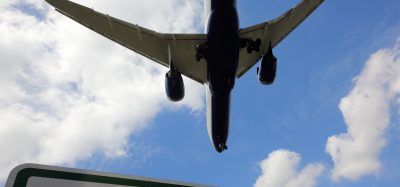Changi Airport Group strengthens runway safety with enhanced FOD detection technology
- Like
- Digg
- Del
- Tumblr
- VKontakte
- Buffer
- Love This
- Odnoklassniki
- Meneame
- Blogger
- Amazon
- Yahoo Mail
- Gmail
- AOL
- Newsvine
- HackerNews
- Evernote
- MySpace
- Mail.ru
- Viadeo
- Line
- Comments
- Yummly
- SMS
- Viber
- Telegram
- Subscribe
- Skype
- Facebook Messenger
- Kakao
- LiveJournal
- Yammer
- Edgar
- Fintel
- Mix
- Instapaper
- Copy Link
Posted: 13 February 2023 | Changi Airport Group | No comments yet
Flight safety is paramount at Singapore Changi Airport (SIN). That’s why the airport uses iFerret, a high-performing FOD detection system backed by a set of electro-optical sensors and proprietary software, to provide 24/7 surveillance of the runway in all-weather conditions.
As air traffic around the world rebounds strongly and flight movements surge with the easing of COVID-19 travel restrictions, runway safety is more important than ever. Increased runway use intensity would lead to higher probability of foreign object damage risk for aircraft, and such hazards occurring on runways can have catastrophic consequences. At the same time, manpower for conducting airfield inspection remains tight on the ground in many airports, resulting in the urgent need for automation to mitigate the risk.
Automating foreign object debris (FOD) detection on runways
Foreign objects as tiny as a metal bolt left behind unintentionally on the runway surface would pose a significant risk to aircraft safety if ingested into its engine. To safeguard runway operations, Singapore Changi Airport has been using a state-of-the-art, Singapore-designed intelligent and fully automatic foreign object debris (FOD) detection system, known as iFerret, at its Runways 1 and 2 since 2009.
iFerret, which is currently owned by CAG, provides round-the-clock protection against FOD on the runway through its high-definition electro-optical (EO) sensors and proprietary image processing software, which can detect objects as small as 4cm on the 4km long by 60m wide runway with over 95% detection accuracy in all weather conditions, including in the pitch darkness of a rainy night. The system comprises a set of 12 smart cameras installed at a distance from the runway, so that it can be deployed and maintained without having to disturb the operational runway. Upon FOD detection, the system automatically alerts airfield operators and provides a zoom-in image of the suspect item on the runway surface (e.g. a piece of asphalt or loose tyre pieces), so that duty safety personnel can perform visual verification remotely before despatching a site team to retrieve any FOD threat in real time.
This solution provides a much higher level of safety assurance than manual runway inspections, which are resource-heavy, susceptible to human errors, and carry the high opportunity cost of runway closures while only providing limited safety assurance within the short duration of each manual inspection interval.
Going a step further to roll out an improved system
In 2020, as part of continuous improvement, Changi Airport Group (CAG) further upgraded the system’s detection algorithm to reduce invalid alerts. These false alerts are sometimes caused by reflections of objects due to water puddles on the wet runway surface during or after a rain. For over 15 months, CAG’s engineering team and its technology partner from NCS worked hand-in-hand to enhance the system’s detection accuracy to remove false positives. The outcome – iFerret version 2.0 – managed to cut down false alarms by more than ten-fold.
iFerret 2.0 has since been installed along Changi Airport’s new Runway 3. Plans are underway to deploy this upgraded iFerret version to Runways 1 and 2.


Photo credit: NCS
Accurate detection
iFerret is the only system in the market that produces superior full HD coloured images, allowing foreign objects on the dark surface to be seen as clearly as in daytime even in low lighting conditions. It also allows operators to perform visual verification remotely by zooming in, and is easy to maintain without the need for runway closure due to its extended distance from the runway. Using EO sensors also meant that the system does not interfere with existing aviation systems or pose health hazards, unlike other solutions which make use of radar technology.
Usage of iFerret can also be extended to wildlife detection, airfield monitoring and surveillance, as evident from the data collected over the years by iFerret at Changi Airport.
Ms Liu Yanling, Senior Vice President of Airside Operations, Transformation and Operations Strategy at Changi Airport Group, said: “iFerret is an important system that helps safeguard every flight’s take-off and landing at Changi Airport. Besides alleviating the threat of FOD on our runways, iFerret’s ability to accurately detect FOD and pinpoint its exact location minimises the time required to remove FOD and the need for extended runway closures. This secures runway safety and capacity essential for the running of the airport.”
Related topics
Foreign object detection (FOD), Runways and pavements, Safety

















